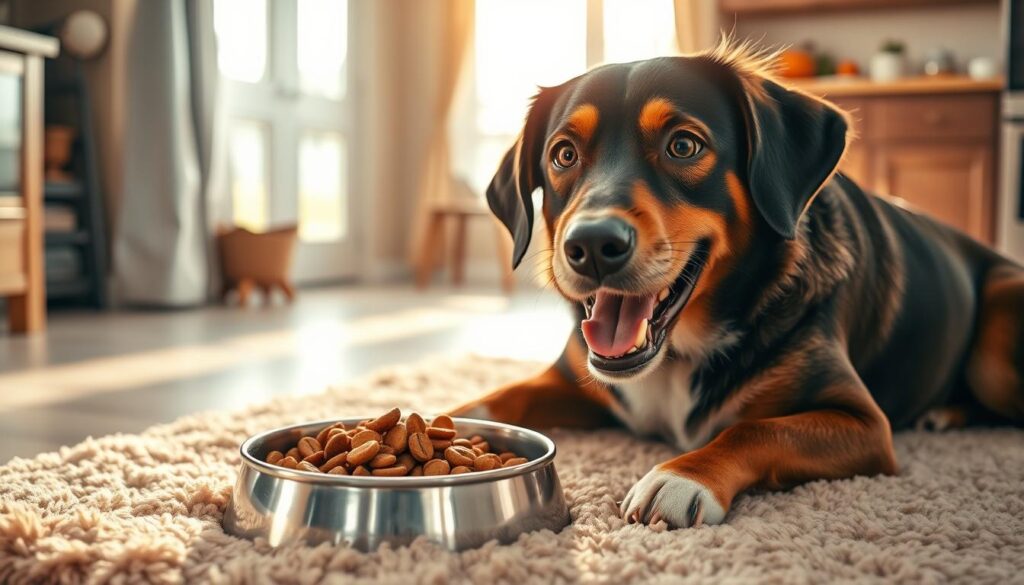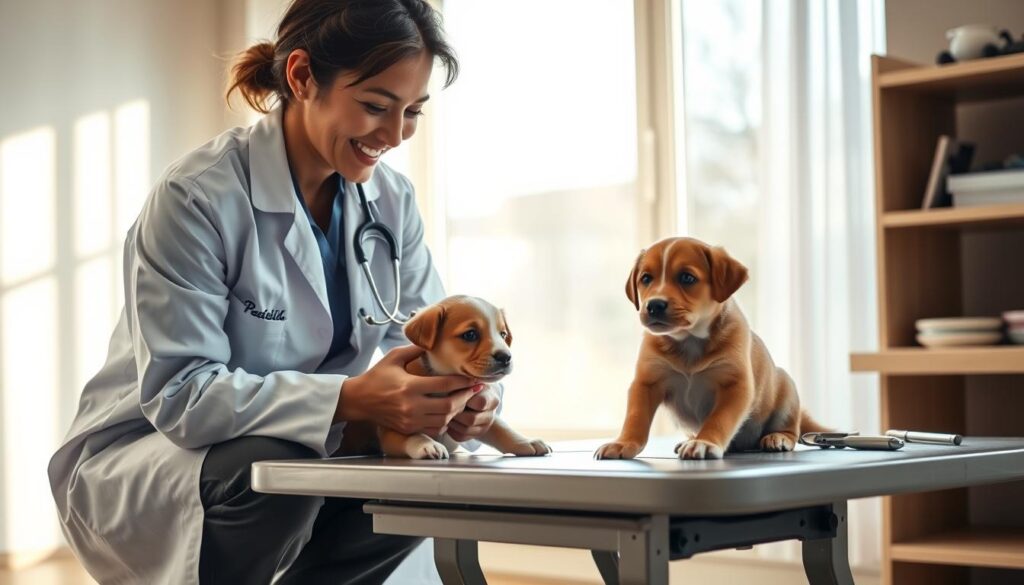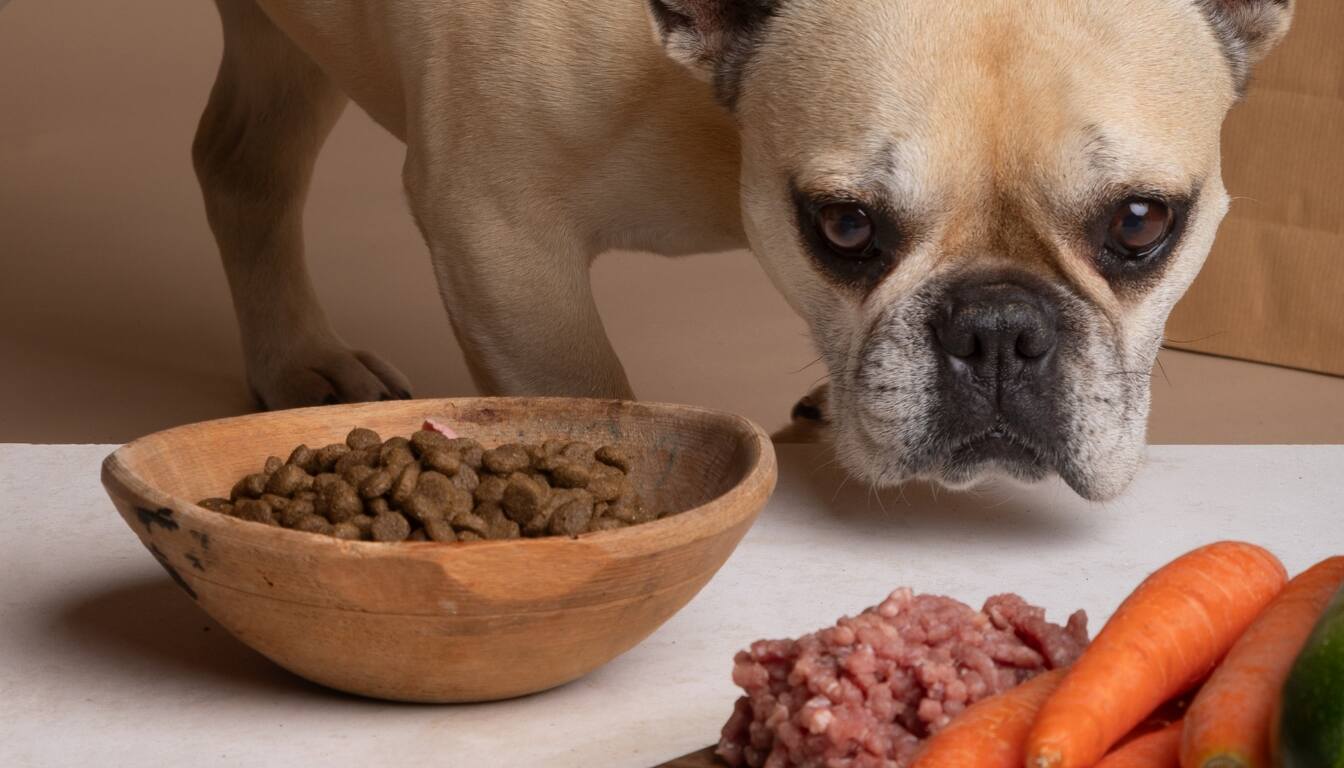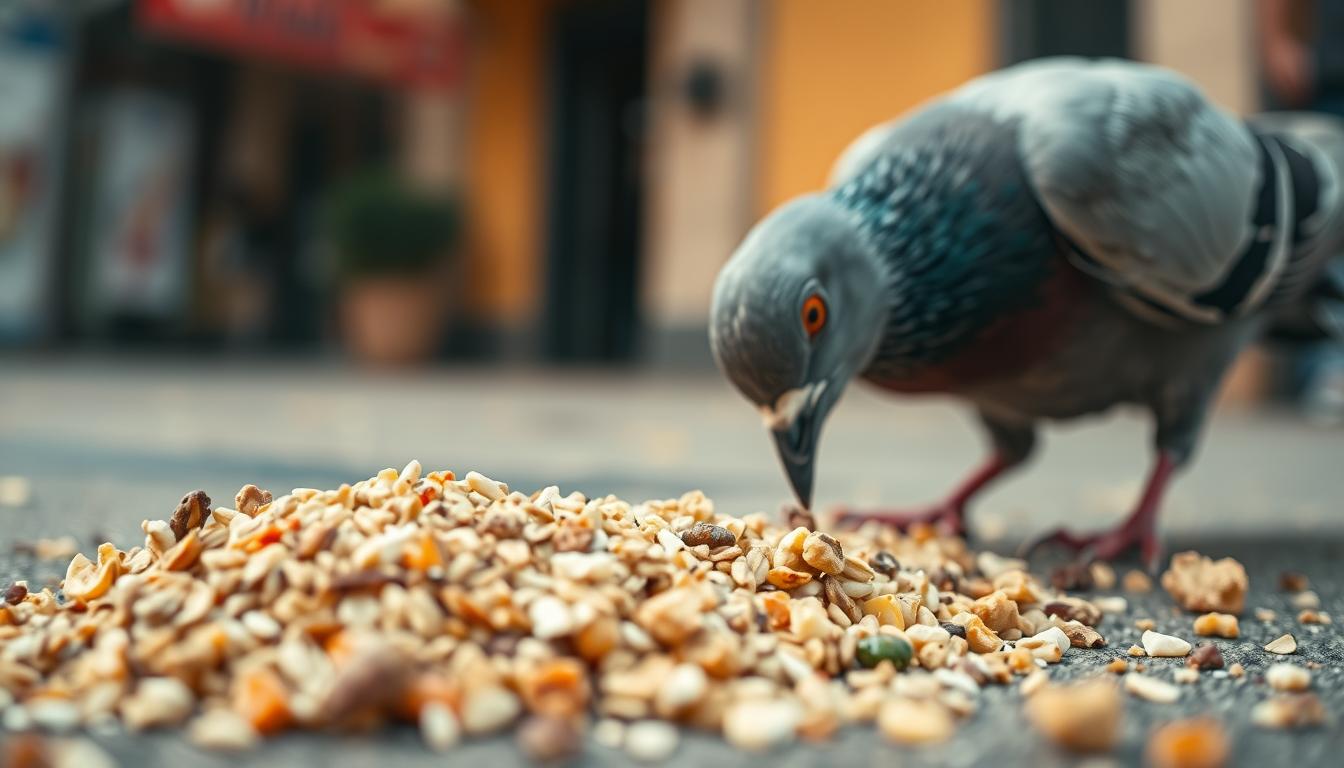Have you ever wondered why your furry friend suddenly loses interest in their meals? It’s a common concern for many pet owners, and the reasons can vary widely. From health issues to changes in routine, understanding the root cause is the first step to solving the problem.
Every pet is unique, and what works for one might not work for another. That’s why it’s essential to approach this issue with patience and creativity. Whether it’s adjusting their food or creating a more appealing mealtime environment, small changes can make a big difference.
In this article, we’ll explore 5 proven ways to help stimulate your pet’s appetite. From recognizing common causes to knowing when to seek professional help, you’ll find actionable advice backed by expert research. Let’s get started on the path to happier, healthier mealtimes for your beloved companion!
Table of Contents
Understanding the Loss of Appetite in Dogs
Noticing a change in your pet’s eating patterns can be concerning. While occasional skipped meals might not be alarming, persistent loss of appetite could signal an underlying issue. Understanding the difference between normal fluctuations and potential problems is key to addressing the situation effectively.
Interpreting Changes in Eating Behaviors
Your pet’s appetite can vary due to several factors. For example, a slight reduction in food consumption over a day or two might not be a cause for concern. However, if they show a lack of enthusiasm during mealtime or avoid their favorite treats, it’s worth paying attention.
Subtle signs like unusual drooling or reluctance to chew hard food could indicate discomfort in their mouth. Additionally, behavioral changes such as lethargy or irritability might accompany a reduced appetite, suggesting a deeper issue.
Differentiating Normal vs Concerning Signs
It’s normal for pets to have occasional off days. However, if the loss of appetite persists beyond 48 hours or is paired with other symptoms like vomiting or diarrhea, it’s time to take action. Environmental factors, such as a recent move or changes in routine, can also influence their eating habits.
Tracking their daily feeding regimen can help identify patterns. If your pet continues to refuse meals or shows multiple warning signs, consulting a veterinarian is the best course of action. Early intervention can prevent more serious health issues.
Dog Not Eating: Recognizing Common Causes
When your furry companion turns away from their bowl, it’s natural to feel concerned. A loss of appetite can stem from various factors, ranging from health issues to environmental changes. Identifying the root cause is the first step toward helping your pet regain their enthusiasm for meals.
Illness as a Primary Factor
One of the most common reasons for a pet’s reluctance to eat is illness. Conditions like gastrointestinal problems, kidney issues, or infections can significantly reduce their appetite. If your pet shows additional symptoms such as vomiting, diarrhea, or lethargy, it’s crucial to consult a vet promptly.
Dental Issues and Discomfort
Pain in the mouth, such as a broken tooth or gum disease, can make eating uncomfortable. Pets may avoid hard food or show signs like drooling or pawing at their mouth. Regular dental check-ups can help prevent these issues and ensure your pet’s comfort during meals.
Environmental Triggers and Stress
Changes in routine, travel, or exposure to unfamiliar surroundings can cause stress, leading to a reduced appetite. Even minor disruptions, like the presence of aggressive pets, can affect their eating habits. Creating a calm and consistent environment can help ease their anxiety and encourage them to eat.
Understanding the reason behind your pet’s behavior is key to addressing the issue effectively. If the problem persists or worsens, seeking professional advice from a vet is always the best course of action.
How to Stimulate Your Dog’s Appetite
Is your pup turning their nose up at mealtime? Let’s explore how to make their food irresistible. Small adjustments can transform a bland meal into a feast your furry friend can’t resist. Whether it’s enhancing the aroma or introducing variety, these tips will help reignite their love for eating.

Tasty Food Additions and the Warm Water Effect
One simple trick is adding warm water to dry kibble. This enhances the aroma and softens the texture, making it more appealing. You can also mix in low-sodium broth or a small amount of plain chicken for extra flavor. These additions can make a world of difference for picky eaters.
Another effective method is warming their food slightly. Studies show that warming meals can increase appetite by up to 30%. Just be sure to test the temperature before serving to avoid burns.
Creative Feeding Techniques for Picky Eaters
If your pet is still hesitant, try using puzzle feeders or food-dispensing toys. These tools make mealtime fun and engaging, encouraging your pup to eat. Mixing wet and dry food can also provide variety and stimulate their interest.
Consistency is key. Schedule regular meal times and avoid overfeeding treats. Gradually transitioning to new food types can also prevent digestive upset. With patience and creativity, you can help your furry friend enjoy their meals again.
Addressing Medical and Behavioral Issues
Is your pup refusing meals? It’s time to uncover the root cause. A lack of appetite can stem from either medical or behavioral issues. Understanding the difference is crucial to helping your furry friend get back on track.

When It’s a Medical Concern
If your pup’s lack of appetite is accompanied by symptoms like vomiting, lethargy, or pain, it’s likely a medical issue. Conditions such as dental disease, gastrointestinal problems, or systemic infections can make eating uncomfortable or unappealing.
In such cases, consulting a vet is essential. They may recommend prescription diets, medication, or even appetite stimulants. Early intervention can prevent complications and ensure your pup’s health.
- Dental pain: Broken teeth or gum disease can make chewing painful.
- Systemic diseases: Kidney or liver issues can reduce appetite.
- Infections: Respiratory or gastrointestinal infections often cause discomfort.
Behavioral Adjustments and Routine Tweaks
Sometimes, the issue isn’t medical but behavioral. Changes in routine, anxiety, or stress can lead to a lack of appetite. For example, moving to a new home or introducing a new pet can disrupt your pup’s eating habits.
Here are some effective strategies:
- Establish a consistent feeding schedule to create a sense of security.
- Reduce treats to encourage interest in regular food.
- Create a calm environment by minimizing noise and distractions.
If behavioral changes don’t resolve the problem, seeking advice from a vet is always a good idea. They can help determine if there’s an underlying condition or suggest additional solutions.
Modifying Your Dog’s Feeding Routine and Environment
Mealtime should be a joyful experience for your pet, but sometimes it can become a challenge. Small adjustments to their routine and environment can make a big difference. By creating a consistent and comfortable setup, you can encourage healthier eating habits and reignite their interest in food.
Optimizing Mealtime Setup
Start by establishing a consistent feeding schedule. Pets thrive on routine, and knowing when to expect their meal can build anticipation. Choose a quiet area away from distractions, like other pets or loud noises. This helps reduce stress and allows your furry friend to focus on eating.
Practical changes can also improve comfort. For example, using raised bowls can ease strain on their neck and joints. A nonslip mat under the bowl ensures stability during meal times. These small tweaks can make the experience more enjoyable for your pet.
Gradual adjustments are key. Sudden changes can upset their routine, so introduce new setups slowly. For instance, if you’re switching to a raised bowl, place it next to their old one for a few days. This helps them adapt without stress.
Experts suggest that a calm environment can significantly boost your pet’s appetite. Studies show that 70% of pets eat better when they feel secure. By minimizing disruptions and creating a peaceful space, you can encourage healthier eating habits over time.
Remember, every pet is unique. What works for one might not work for another. Pay attention to their preferences and adjust accordingly. With patience and creativity, you can transform mealtime into a positive experience for your furry companion.
Preventive Measures and When to Consult Your Vet
Your pet’s health is a priority, and knowing when to seek professional help can make all the difference. Preventive care and early intervention are essential to addressing potential issues before they escalate. By staying vigilant and proactive, you can ensure your furry companion remains happy and healthy.
Recognizing Warning Signs
Certain symptoms should never be ignored. A persistent loss of appetite, excessive water consumption, or noticeable weight loss could indicate a serious issue. Other red flags include lethargy, vomiting, or changes in behavior. Keeping a close record of these signs can help your veterinarian diagnose the problem more effectively.
For example, sudden changes in eating habits might signal underlying conditions like cancer or systemic diseases. Early detection is crucial, as it can significantly improve treatment outcomes. If your pet shows multiple warning signs, don’t hesitate to contact vet services immediately.
Proactive Veterinary Consultation
Regular check-ups are a cornerstone of preventive care. Even if your pet seems healthy, routine visits can uncover hidden issues. For older animals or those with previous health conditions, these consultations are even more critical. Your veterinarian can provide tailored advice and recommend preventive measures based on your pet’s unique needs.
Here are some situations where immediate action is necessary:
- Persistent loss of appetite lasting more than 48 hours.
- Unusual lethargy or behavioral changes.
- Visible discomfort, such as limping or excessive drooling.
Being proactive can prevent severe complications. Early intervention not only saves time and money but also ensures your pet’s well-being. Remember, your vet is your best ally in keeping your furry friend healthy.
Conclusion
Understanding why your pet avoids meals can help you take the right steps. A loss of appetite can stem from various causes, such as stress, dental issues, or underlying health conditions. Observing their behavior and identifying symptoms is crucial to addressing the problem effectively.
Simple changes, like enhancing food flavor with warm water or creating a calm mealtime environment, can make a big difference. However, if the issue persists or is accompanied by concerning signs, consulting a vet is essential. Early intervention can prevent more serious health complications.
Every pet is unique, and what works for one may not work for another. By staying attentive and proactive, you can help your furry companion regain their appetite and enjoy a healthier, happier life. Monitor their eating habits closely and seek professional advice when needed.
FAQ
What should I do if my pet refuses to eat?
Start by checking for obvious issues like dental pain or stress. Offer warm water or mix tasty additions like broth into their meal. If the problem persists, consult your veterinarian for advice.
How can I tell if my animal’s lack of appetite is serious?
Monitor for additional symptoms like lethargy, vomiting, or weight loss. If these signs appear or the issue lasts more than 24 hours, seek professional help immediately.
Can anxiety cause a loss of appetite in my furry friend?
Yes, stress or changes in routine can impact their eating habits. Creating a calm environment and sticking to a consistent schedule can help restore their appetite.
Are there specific foods that can stimulate my pet’s desire to eat?
Try adding warm water, chicken broth, or a small amount of wet food to their kibble. These additions can make meals more appealing and encourage eating.
When should I contact a vet about my animal’s eating issues?
If your pet hasn’t eaten for over a day, shows signs of illness, or exhibits unusual behavior, it’s best to contact your veterinarian for a thorough evaluation.
Can dental problems affect my pet’s ability to eat?
Absolutely. Tooth pain or gum disease can make chewing difficult. Regular dental check-ups and addressing oral health issues can improve their appetite.
How can I make mealtime more appealing for my picky eater?
Experiment with different textures, flavors, and feeding techniques. Puzzle feeders or interactive toys can also make eating more engaging and fun.
What environmental changes can help my pet eat better?
Ensure their feeding area is quiet, clean, and free from distractions. Adjusting the height of their bowl or using a mat can also make mealtime more comfortable.




